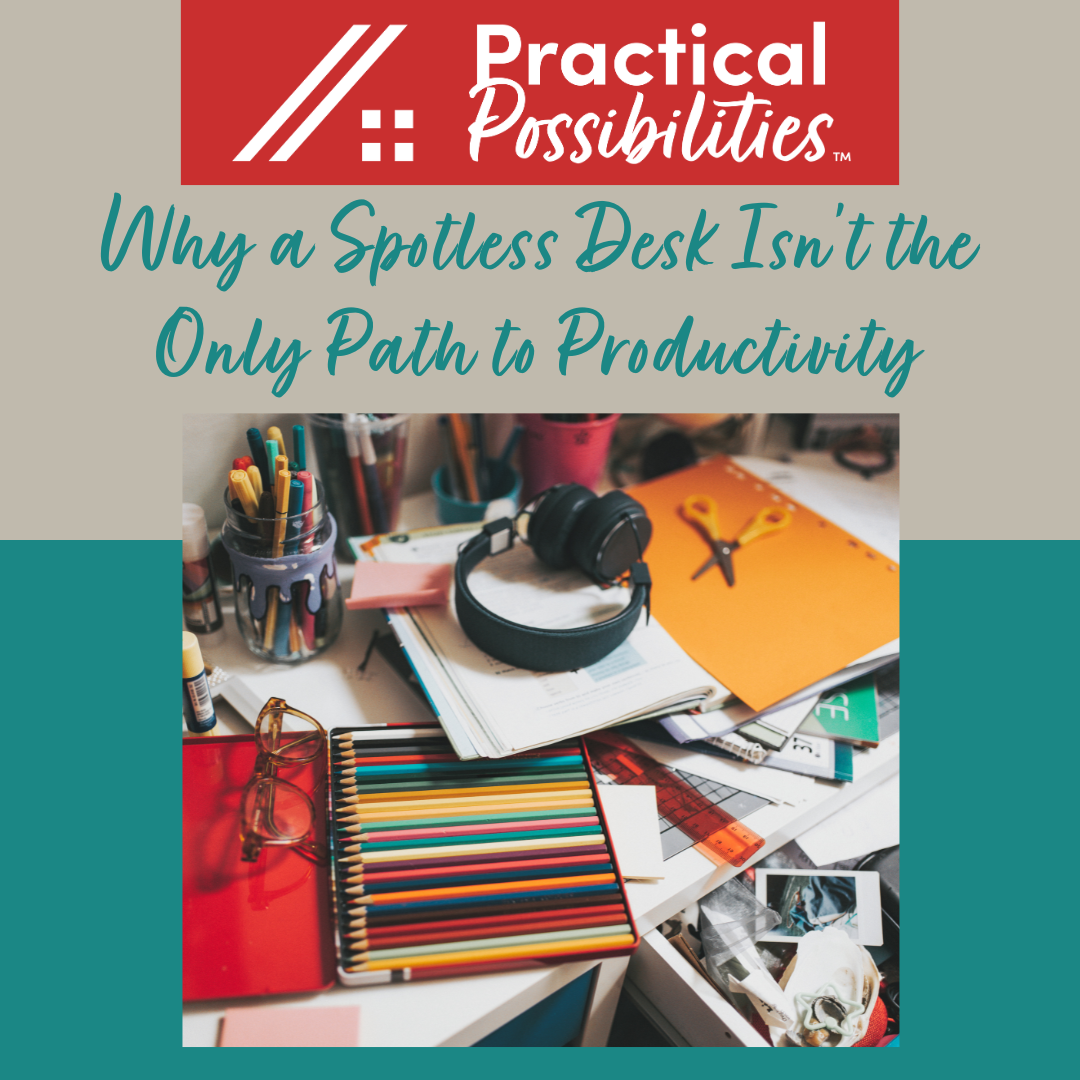
12/12/2024
Does Your Desk Really Need to Be Perfectly Clear to Stay Organized?
A perfectly clear desk might work for some, but if you’re someone who thrives on visual stimulation and quick access to your tools, it’s not the only way. Living with a neurodivergent mind often means needing to see and engage with your environment to feel inspired—and to avoid losing track of things. However, limited space and clutter can make it challenging to maintain order. With a bit of creativity, you can design a desk space that’s both functional and visually engaging.
Out of Sight, Out of Mind
Do you avoid putting things away for fear of forgetting them? This can lead to sticky notes everywhere, piles of paper, and random items scattered around. Before long, you might not even have room to jot down notes or work comfortably. Too much visual clutter can be overwhelming and stifle inspiration.
The key is finding a balance: keep essentials visible and store less critical items in accessible, memorable ways.
- Use Wall Space. Corkboards are great for reminders, while dry-erase boards can capture temporary notes. Another option is hanging clipboards with specific project papers using command hooks—a system I once created for a client. This frees up desk space while keeping key items visible.
- Designate Desk Zones. Keep frequently used items—like computer equipment, sketch pads, or pencils—in dedicated spots on your desk. This can help you maintain order while still having easy access to essentials. Back in my theater days, we used a system for organizing props that could work well for your desk. Each table was taped off into specific zones, with every prop assigned to a designated area. It was a simple but effective way to ensure everything stayed in place during chaotic backstage moments. You can adapt this idea by using tape or a clever desk covering to section off areas for your most-used items. Visual cues like these can make it easier to keep everything where it belongs, even during your busiest workdays.
Keeping Track of Tasks
Some desk items are there to remind you to take action. For instance, I have a video recorder on my desk as a reminder to edit videos (though it’s been sitting there for months—proof that even organizers aren’t perfect!).
If you’re using physical objects as task reminders, consider adding a system to track these tasks and decisions:
- Task Management Tools. Try apps like Asana or a simple paper to-do list.
- Corkboard Notes. Use a visible spot to track tasks and include details about where you’ve stored related items.
Experiment with different systems to find what works for you—it’s okay to try one and switch if it doesn’t feel right.
Avoiding Overwhelm: Decision Clutter
Neurodivergent minds often juggle multiple ideas simultaneously, leading to a cluttered workspace as we try to hold onto every thought and task.
Strategies to reduce decision clutter:
- Set Boundaries. Limit how much desk space you allocate for non-current projects. Once items encroach on that boundary, decide what to put away or remove. Set aside time (e.g., monthly) to review your desk and make decisions about the accumulated items.
- Delegate Decisions. If possible, offload tasks to someone else. While explaining a task takes time upfront, it pays off when the helper can handle similar tasks independently in the future.
- Use Systems to Simplify. Create a decision-making flowchart or ask tools like ChatGPT to guide you. Technology can help you get unstuck, especially when you’re overwhelmed by too many options.
Building Consistent Systems
If past desk organization attempts haven’t worked, it’s likely because the methods weren’t tailored to your unique needs. Complicated steps or rigid rules can make it hard to stay consistent.
Instead of striving for a spotless desk, aim for a functional one:
- Keep items for current projects accessible while storing extras in drawers or containers.
- Use labels to remember where things are stored. If plain labels don’t appeal to you, design custom ones that fit your style.
- Group related items together—like office supplies, rarely used electronics, or paperwork. This makes it easier to find what you need and avoid buying duplicates.
Redefining a “Clean” Desk
Your desk doesn’t need to be minimalist to serve you well. By keeping essential tools and supplies visible while reserving enough space for work, you can create a setup that balances inspiration and functionality. Let go of the clean desk myth and embrace methods that align with your creativity and bandwidth.
Comments
Must be Logged In to leave comments.

